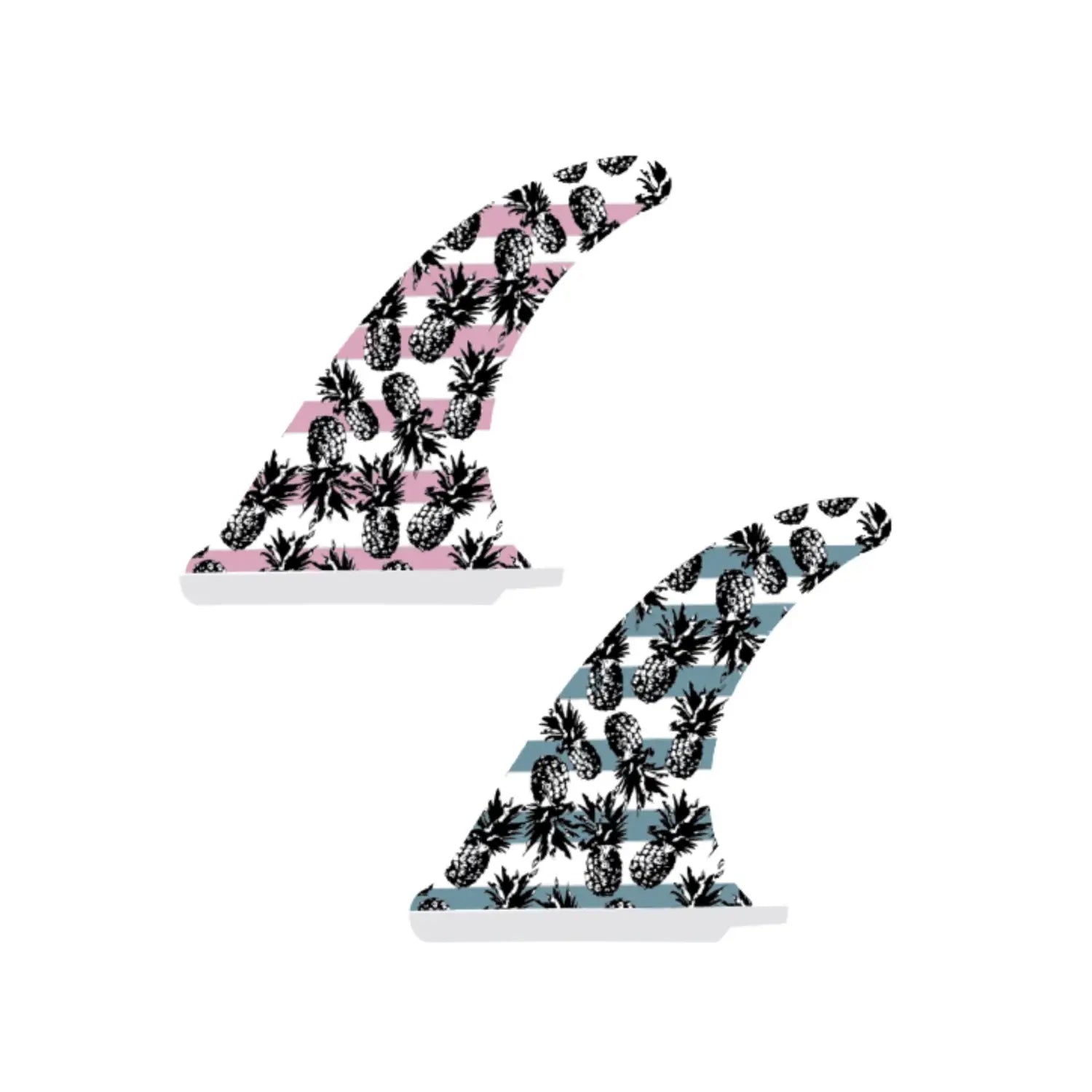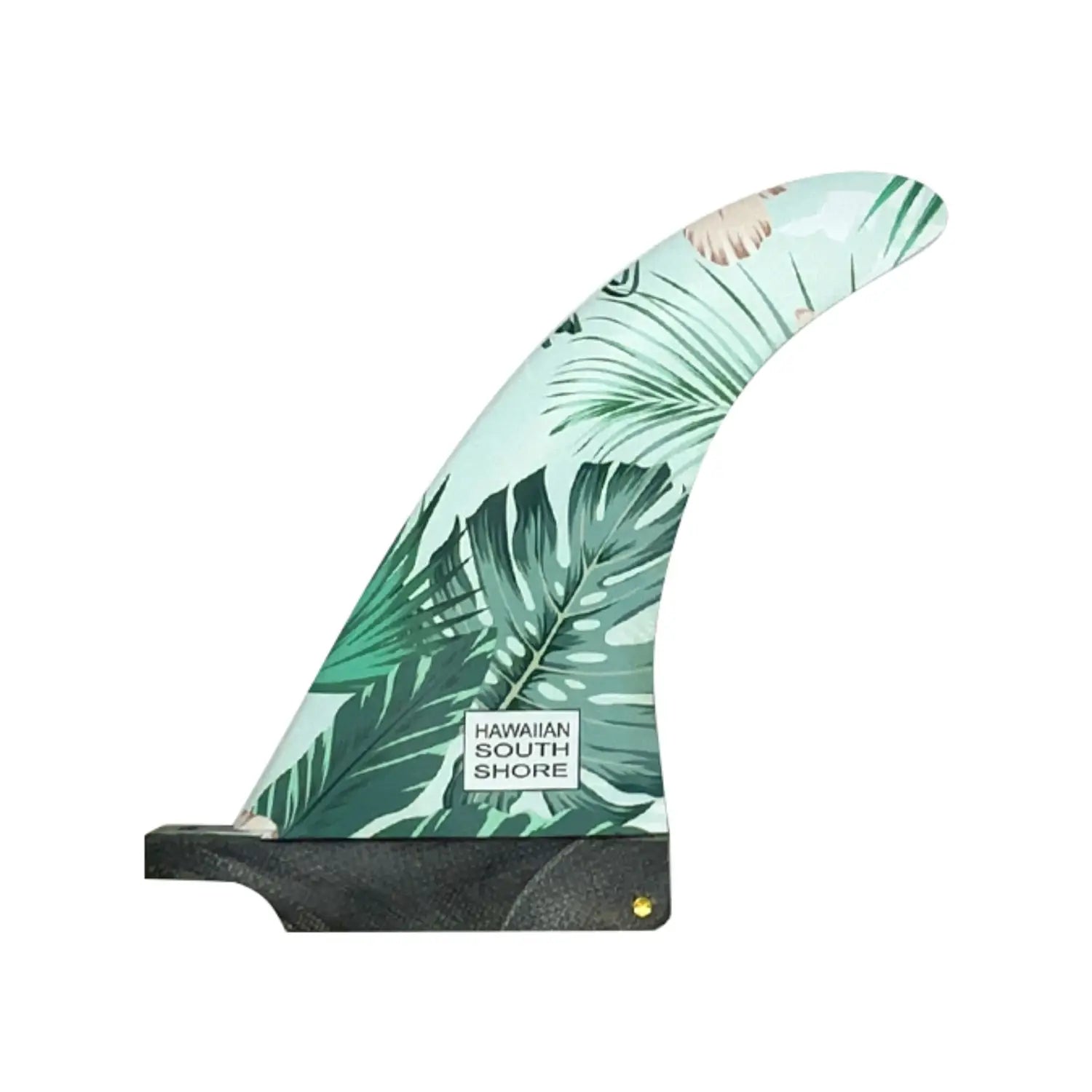Understanding Fin Rake and Why It Is So Important
Share
What is Fin Rake?
There are a lot of factors that go into making a surfboard work, from rocker and outline to rail shape and bottom contours.

Fins are also a hugely influential design element, although most people only have a basic understanding of how their fins interact with the water and board. Most of our knowledge about fins involves the number of fins on the board and how they are clustered (i.e. single fin versus twin, thruster, quad, quad + stabilizer, etc.).
But the actual design of the fins is also very important and can have a marked effect on how a board feels and responds.
While discussions about fin design tend to apply to all types of fin setups (from large single fins to the smaller fins used in more modern thruster and quad setups), the vast majority of boards come with three or four fins, which tend to be around 4.5 inches deep (depth is measured from the bottom of the board to the tip of the fin).
The deeper a fin extends into the water, the more hold it provides during turns. The tradeoff, of course, is that fins become noticeably more difficult to turn the longer they get, due to that same hold characteristic.
The second main measurement in fins is the base length, which is measured from along the bottom of the board, from the front of the fin base to its rear. Fins with longer bases tend to provide more drive, but they also sacrifice maneuverability, as more base means more fin to pivot in the water, which results in a longer turning radius.
Rake is the most esoteric of the fin measurements, but by many estimations is also one of the most important.

To understand rake, you have to first understand fin depth and base length, which is why we discussed these initially. Rake is the measurement of how far behind the trailing edge of the base the tip of the fin extends. If this seems confusing, think of an imaginary line that is drawn from the rear of the fins base up to the tip of the fin.
This line will typically extend at a diagonal toward the rear of the board. (Keep this line in mind, as it will eventually reveal itself to be the hypotenuse of a right triangle.) Now imagine a second line dropping straight down from the tip of the fin to the bottom of the surfboard. This line will intersect with the board a certain distance behind the trailing edge of the base of the fin. That third distance makes up the third side of a right triangle, and is technically called the fins rake.
If a fin has no rake at all (which is virtually unheard of in modern fins), then the trailing tip of the fin would be perfectly aligned with the trailing edge of the base.
The closest you might get to a “rakeless” fin on a modern board is a pivot fin on a traditional noserider, yet even these fins will typically have at least a little bit of rake). However, since surfboard designers have found that rake is helpful with helping a board draw out turns, virtually all fins made today feature rake—and some of them have quite a lot of it.
As mentioned above, a fin with minimal rake will initiate turns that are more pivots than carves. These upright fins don’t allow the rail to engage in the turn, but rather produce sharp, quick turns with a tight turning radius. This makes them great for noseriders, as they can be used to kick a board into position on the face quickly to maximize tip time. They are also good for critical turns in the pocket of hollow waves, where you want the board to response quickly and efficiently, rather than drawing out longer, carving turns.
Fins with exaggerated rake, on the other hand, produce more drawn-out turns that utilize the rail—ideal for big, open-faced carves on down-the-line point breaks. These fins are more likely to hold the rail in for longer during turns, rather than releasing and blowing the tail out.
To summarize, more upright fins are better for tight-radius turns in hollower waves, while fins with more rake are better for drawn-out power carves big, open faces. Hence, you are more likely to see Kelly Slater ride a fin with less rake while surfing at Pipeline, whereas Pancho Sullivan would likely ride a fin with more rake while doing huge hacks at Sunset Beach.
Part of what makes rake so interesting is that the more there is in the fin, the more the fin flexes. While this might be less noticeable with the smaller fins used on modern shortboards, it is definitely apparent when selecting fins for longboards.
An upright, pivot-style fin on a noserider will have little to no flex at all, but a Greenough-style fin with a ton of sweep will actually flex a lot during turns, due to the fact that the tip of the fin is far behind the wide base, allowing the fiberglass in the fin to load up during turns. As the fin flexes, it builds up potential energy that is eventually exerted when the turn is completed and the torque of the turn ceases to push on the tip of the fin and cause it to flex. At this point, the built-in “memory” of the fiberglass in the fin reverts to its original shape, which slingshots the board through the turn and into the next maneuver, providing a “livelier” feel.
Ultimately, the amount of rake that you select in your fins will depend on a number of different factors, including the type of board and wave that you are riding, your weight, and your style of surfing.
While fin design can become a bottomless pit of obsession that is easy to get lost in, it is definitely worth understanding the basic concepts so that you know what you are getting into when you screw a new set of fins into your board. We hope this article helped shed some light on fin rake, and would love to hear from you about your experience with different fins!
